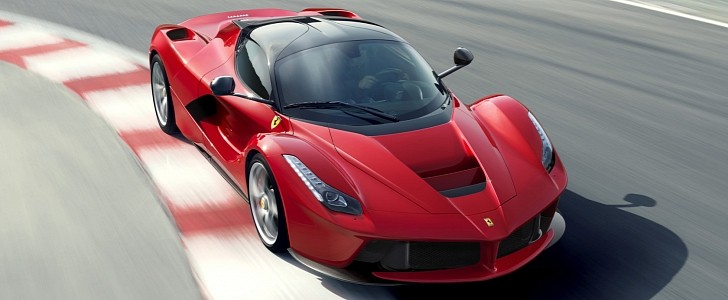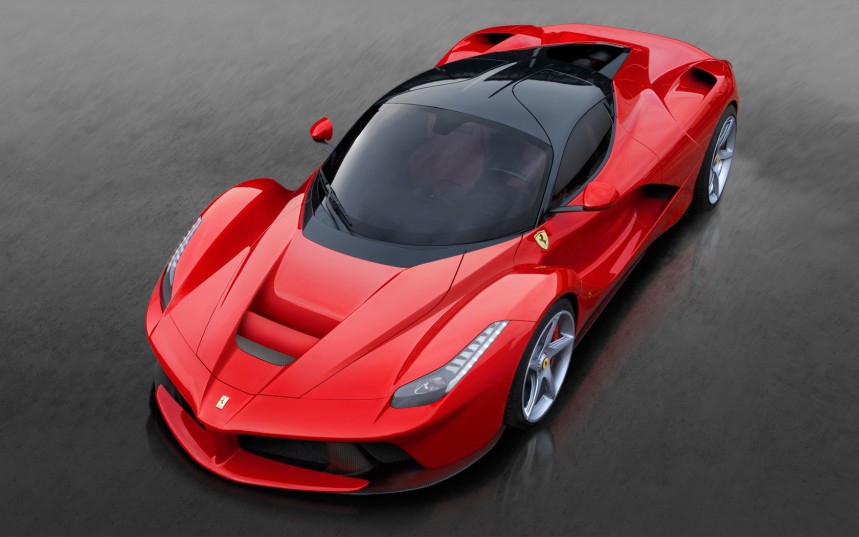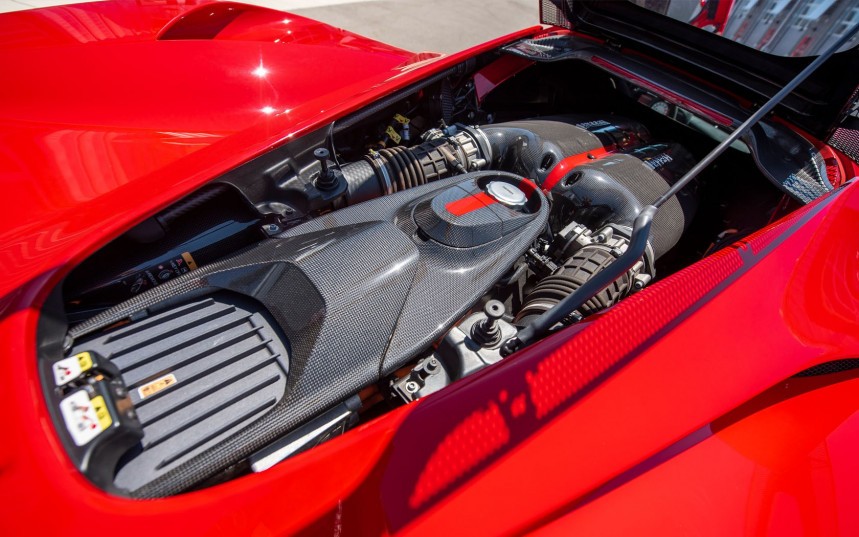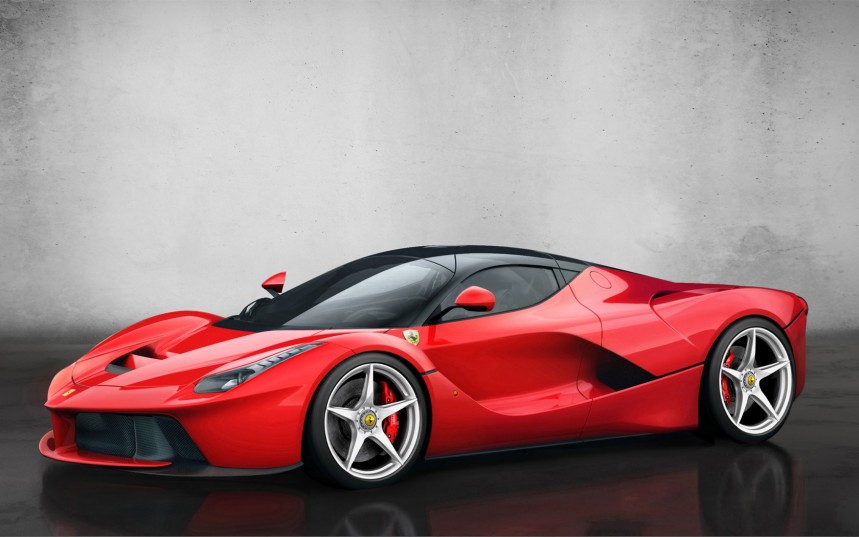One of the most innovative supercars of the last decade, the LaFerrari follows in the footsteps of its predecessors, bringing the latest racecar technology to the world of road-legal vehicles. Among these innovations is the KERS system that makes it the first hybrid to come out of Maranello and an important building block for future Ferrari models.
Development of the LaFerrari began in 2011, with the company intending to create the most advanced, powerful, and exclusive car to ever wear the Prancing Horse badge.
Ferrari’s own Centro Stile and long-time partner Pininfarina were tasked with designing the new flagship, and both teams came up with nine conceptual design studies that made the management and the development team's shortlist.
Out of those, only two were built, the Concept Manta and Concept Tensostruttura, which were both developed by the Centro Stile, under the leadership of Flavio Manzoni.
The Manta was chosen as the final design, which was codenamed F-150, but the production version also incorporates cues from the Tensostruttura. This makes it the first Ferrari since the Bertone-styled 1973 Dino 308 GT4 not to be designed by Pininfarina.
For the chassis, Ferrari was not satisfied with just transferring F1 technology, so they assigned legendary designer and Scuderia technical director Rory Byrne to develop it.
The result is a hi-tech monocoque structure built using four types of aeronautical-grade carbon fiber protected in certain areas like the underbody by a Kevlar layer.
Ferrari claims it has 27% more torsional rigidity, 22% more beam stiffness while also being 20% lighter than the chassis used by the Enzo.
However, the highlight of this car is its revolutionary hybrid powertrain, the first ever to be used on a road-going Ferrari. It employs the latest technology derived from the world of Formula One.
At its heart sits a slightly enlarged and retuned version of the F140 engine built for its predecessor and used by its track-oriented version, the FXX.
The beautiful naturally aspirated 6.3-liter (385 cu in) V12 was upgraded to 789 hp (588 kW; 800 PS) and a maximum torque value of 700 Nm (516 lb-ft).
Obviously, that was not enough, so engineers added an electric motor and an HY-KERS system which added an extra 161 hp (120 kW; 163 PS) available in short bursts, much like the traditional KERS systems used by Formula One cars.
The motor gets its power from a compact battery pack comprised of 120 cells, which are assembled in-house by Ferrari. It can be charge during use when braking or every time the ICE produces more torque than it requires.
The LaFerrari features several other electronic controls like the EF1-Trac F1 electronic traction control, E-Diff 3 third-generation electronic differential, or SCM-E magnetorheological shock absorbers with twin solenoids.
All these electronics plus the hybrid system translate into an overall weight of 1,585 kg (3,495 lbs). That’s 105 kg (232 lbs) more than the Enzo Ferrari yet remains an excellent figure considering that the hybrid battery alone weighs 60 kg (132 lbs).
Using the paddle shifters of the seven-speed dual-clutch gearbox, drivers can reach 100 kph (62 mph) from a standstill in less than three seconds on their way to a maximum top speed of 350 kph (220 mph).
The amazing LaFerrari was built from June 2013 to January 2016 in 500 coupe units. An additional open-top version called the Aperta was introduced at the 2016 Paris Motor Show, of which 210 examples were manufactured until 2018.
As it happened with its predecessors, most of the LaFerrari hypercars were sold before production ever began. The starting price for a coupe was somewhere around $1.4 million, while the open-top model was sold for no less than $2 million.
However, having the money was not enough as potential customers went through an extensive selection process. One of the main requirements for consideration was to already own at least an F40, F50, and an Enzo.
The LaFerrari lives up to its name as the "definitive" Ferrari and will go down in history as the most revolutionary of the prancing horses, setting the scene for new models such as the SF90 Stradale.
Ferrari’s own Centro Stile and long-time partner Pininfarina were tasked with designing the new flagship, and both teams came up with nine conceptual design studies that made the management and the development team's shortlist.
Out of those, only two were built, the Concept Manta and Concept Tensostruttura, which were both developed by the Centro Stile, under the leadership of Flavio Manzoni.
The Manta was chosen as the final design, which was codenamed F-150, but the production version also incorporates cues from the Tensostruttura. This makes it the first Ferrari since the Bertone-styled 1973 Dino 308 GT4 not to be designed by Pininfarina.
The result is a hi-tech monocoque structure built using four types of aeronautical-grade carbon fiber protected in certain areas like the underbody by a Kevlar layer.
Ferrari claims it has 27% more torsional rigidity, 22% more beam stiffness while also being 20% lighter than the chassis used by the Enzo.
However, the highlight of this car is its revolutionary hybrid powertrain, the first ever to be used on a road-going Ferrari. It employs the latest technology derived from the world of Formula One.
At its heart sits a slightly enlarged and retuned version of the F140 engine built for its predecessor and used by its track-oriented version, the FXX.
Obviously, that was not enough, so engineers added an electric motor and an HY-KERS system which added an extra 161 hp (120 kW; 163 PS) available in short bursts, much like the traditional KERS systems used by Formula One cars.
The motor gets its power from a compact battery pack comprised of 120 cells, which are assembled in-house by Ferrari. It can be charge during use when braking or every time the ICE produces more torque than it requires.
The LaFerrari features several other electronic controls like the EF1-Trac F1 electronic traction control, E-Diff 3 third-generation electronic differential, or SCM-E magnetorheological shock absorbers with twin solenoids.
All these electronics plus the hybrid system translate into an overall weight of 1,585 kg (3,495 lbs). That’s 105 kg (232 lbs) more than the Enzo Ferrari yet remains an excellent figure considering that the hybrid battery alone weighs 60 kg (132 lbs).
The amazing LaFerrari was built from June 2013 to January 2016 in 500 coupe units. An additional open-top version called the Aperta was introduced at the 2016 Paris Motor Show, of which 210 examples were manufactured until 2018.
As it happened with its predecessors, most of the LaFerrari hypercars were sold before production ever began. The starting price for a coupe was somewhere around $1.4 million, while the open-top model was sold for no less than $2 million.
However, having the money was not enough as potential customers went through an extensive selection process. One of the main requirements for consideration was to already own at least an F40, F50, and an Enzo.
The LaFerrari lives up to its name as the "definitive" Ferrari and will go down in history as the most revolutionary of the prancing horses, setting the scene for new models such as the SF90 Stradale.




